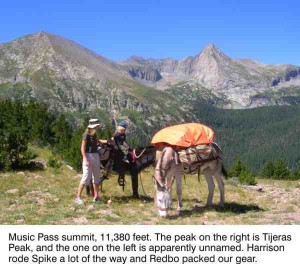Review by Ed Quillen
Americana – October 2007 – Colorado Central Magazine
Hillside Letters A to Z – A Guide to Hometown Landmarks
by Evelyn Corning
Published in 2007 by Mountain Press
ISBN 0878425330
AS A SALIDA RESIDENT, I have teased my Saguache friends that “Our S is bigger than your S,” but that’s about as much thought as I ever gave to these constructed local symbols until I read this delightful book.
Author Evelyn Corning grew up in Escalante, Utah, under its whitewashed hillside “E,” but did not get captivated by the subject until 1986, when she and her family were driving through Tuscon, which has a big “A” for the University of Arizona. Her three-year-old son Patrick asked about it, and Mom told him “Oh, that’s A Mountain.” As the trip continued, Patrick was unusually quiet and kept staring out the windows. An inquiry produced the answer “I’m looking for B Mountain, Mom.”
Corning figured there had to be a B Mountain somewhere, and that started her investigation. Almost all the hillside letters in the United States are in the West because “there are vast landscapes of treeless hillsides visible for miles.”
The first such letter, though, is somewhat obscured by vegetation. It’s a C on Charter Hill at the University of California at Berkeley, built in 1905. It was soon followed by a U at the University of Utah and a Y at Brigham Young University.
Many hillside letters are connected to a college, though the college’s name may have changed. For instance, there’s an A above Fort Collins from the days when Colorado State University was Colorado Agricultural & Mechanical College and its students were “Aggies.”
The most common letter is “M,” partly because there were many Mining colleges in the West — including Colorado School of Mines in Golden, whose M is claimed to be the largest illuminated letter in the world. Mining schools had prospective engineers, and designing and building a big hillside letter is an educational college project. Any slope steep enough to display the letter is also a slope that offers slippage and erosion problems to be solved.
Most other letters are tied to high schools. According to the book, the S on the east side of Saguache was originally for Saguache High School, which was later consolidated into Mountain Valley High School. So now the S belongs to the town. As for Salida’s S, students help maintain it, but it’s also a community responsibility, as evidenced by the lights that alternate between an outline of the S and a red heart outline (“Heart of the Rockies” ), not to mention that it becomes the center of “Christmas Mountain” when the nights are longest.
Actually, this book just lists Salida’s S, Del Norte’s D, and Manassa’s M among the 16 big initials of the Centennial State. But it does go into considerable detail about the W for Western State College in Gunnison.
On occasion during visits to that campus (conferences once or twice a year, plus a daughter in school there for four years), someone would explain to me that the W started as an N, because the college began as Colorado State Normal School.
(Normal school was the preferred term for a teacher’s college a century ago. It does not come from our “normal,” but from the French meaning of a “standard.” The normal school was supposed to set the standard for education. It wasn’t a place to make normal people out of abnormal people. Now, back to Gunnison.)
When the name was changed to Western State College, as the story goes, a slanted leg was added to the N to make it a W.
There’s an element of truth in this story, but that isn’t the total story. This book explains that the N for normal was originally laid out on Smelter Hill. In 1923, the normal school became WSC. Shortly afterwards, work started on the big W that we know now. The old N was soon converted into a G for Gunnison High School.
Western is one of the smallest four-year colleges in the United States — it is also, however, the highest — but it has the largest built-up college emblem in the country. The closest contender is the Y at Brigham Young University in Utah.
In 1948, both claimed the largest letter. The Y, 130 feet wide at the top and 390 feet long, covers 23,360 square feet (a little more than half an acre). Western’s W covers 25,560.
OKAY, IT’S NOT earth-shaking information, and it doesn’t reverse global warming or cure AIDS in Africa, but it’s still a charming bit of information, and this book has plenty more. There’s only one Z (Zap, N.D.) Contrary to legend, these letters were not built to help guide airplane pilots in the early days of aviation.
Besides built-up letters made from stones and concrete, there are painted letters, cut-out letters, and electric letters. But the growing æsthetic preference for natural landscapes means few new letters get built, and federal land managers are increasingly reluctant to allow maintenance of existing letters on public land.
There’s much more in this book, which was a pleasant surprise. I’d expected a cursory catalog, and instead found lots of lore, many whimsical anecdotes, and some interesting analysis about those big symbols that tell some of us when we’re home. Indeed, I began to feel sorry for those people who must endure life in towns without hillside letters. This was fun reading.

